Capt. Snyder, Abraham H.

Commanding Officer, Service Company, 511th PIR
October 29, 1914 - 1996
Citations: Silver Star, Bronze Star with Oak Leaf Cluster, Purple Heart, Combat Infantryman Badge, Presidential Unit Citation, World War II Victory Medal, Philippine Presidential Unit Citation Badge, Philippine Liberation Medal with service star, the American Defense Medal, and the Asiatic-Pacific Campaign Medal with three Battle Stars and one Arrowhead
Bio: Abraham H. Snyder Ret Major US Army, written by his son David A. Snyder, MD.
Abe (or "Moe" as he was called) was born to immigrant parents in Central Falls, Rhode Island in 1914 and was raised in Pawtucket, RI. He ran a paper route to help with family expenses, became an Eagle Scout (which he said helped him to survive the war living in fox holes), played baseball and graduated from East High, later named Tolman High. He attended Providence College for 2 years, went to work for a few years as an insurance agent, and enlisted in the Army on October 9, 1941. He then went thru various training at a few Army bases and went to Fort Benning, Georgia, where he volunteered to become a paratrooper after graduating from Officer Candidate School on October 2, 1942 as part of Officer Candidate Course #76.
Moe was assigned to the 511th Parachute Infantry Regiment's Company H (and later HQ3 and Service Company) which was part of the 11th Airborne Division. Sometime after being assigned to the 511th PIR, Moe joined the "famous" Caterpillar Club when a C-47 he was in developed engine problems during a training jump. The right engine suddenly went out then the left engine followed suit and the plane started going down. The pilots rang the alarm bell for all the men to jump immediately. Moe said it was the only case where he ever jumped without using a static line as there wasn't enough time for the stick of paratroopers to hook up. As the only officer in the stick, Moe had to wait for all his men to jump and he was the last man out of the plane. Lt. Snyder said as soon as his chute opened up a second later his boots hit the ground. Three of the men suffered broken backs and just as he was counting his blessings Moe looked up and saw that the C-47's pilots had managed to re-start the engines and the plane pulled up and flew out of sight, leaving the adrenaline-filled Angels behind on the ground.
Moe saw lots of action in the southwest Pacific but spoke very little about his experiences after the war. He made 23 jumps during his time with the Angels, including 2 into combat zones, and he was awarded the Silver Star, 2 Bronze Stars (one with Oak Leaf Cluster), a Purple Heart as well as well as many other accolades. The only thing he ever told me was that “Leyte was the worst”. He took a piece of shrapnel on Leyte, got patched up, and ran back to the front lines to keep fighting.
He participated in the famous jump onto Los Baños Prison raid in which over 2,100 civilian American prisoners were liberated without taking a single casualty the day before they were scheduled to be executed by their Japanese guards. Secretary of Defense General Colin Powell wrote me a congratulatory and sympathetic letter about the raid when my father passed away in 1996.
I believe Moe was in the first group of Americans to enter Japan, after Harry Truman dropped the atomic bombs. I might not be here were it not for that decision by the president since the 511th PIR's paratroopers were preparing to jump onto Tokyo during the invasion and they expected 90% casualties.
Upon his return to the States my father finished his BS in Journalism at Boston University and he started writing for the Providence Journal. He eventually went into Insurance and Real Estate.
Abe married my mother, Sylvia Berger, a school teacher from Pawtucket, RI, in 1947. They gave birth to twin sons in 1949. My brother Jonathan graduated first in his class from Massachusetts Maritime and became the youngest full Captain in the Merchant Marine. I attended Brown University undergrad and medical school and have practiced ophthalmology in Florida.
Abe stayed in the reserves for about 20 years - he actually loved going to Camp Drum with some buddies for 2 weeks every summer and he was promoted to Major. Had he remained in the service a bit longer he was in line to become a Lt Colonel.
He lived a very peaceful life after the war- all aggressions were out of him. He was active in the Boy Scouts of RI and received several honors. I remember him for his honor and impeccable honesty and bravery and I miss him to this day.
-David A. Snyder, MD
|
|
|
|
|
|
|
|
|
|
|
|
|
|
|
To learn more about the 11th Airborne Division in World War II, please consider purchasing a copy of our books on the Angels:
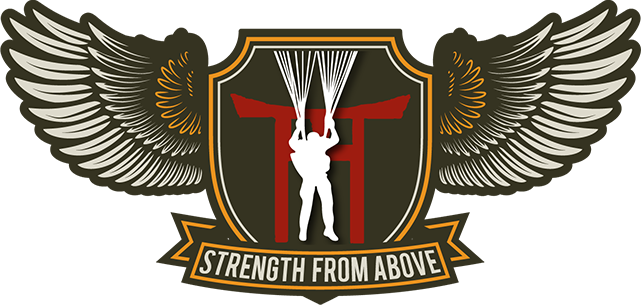
 Abraham H. Snyder in his pre-airborne uniform, possibly taken during Basic Training or Officer Candidate School
Abraham H. Snyder in his pre-airborne uniform, possibly taken during Basic Training or Officer Candidate School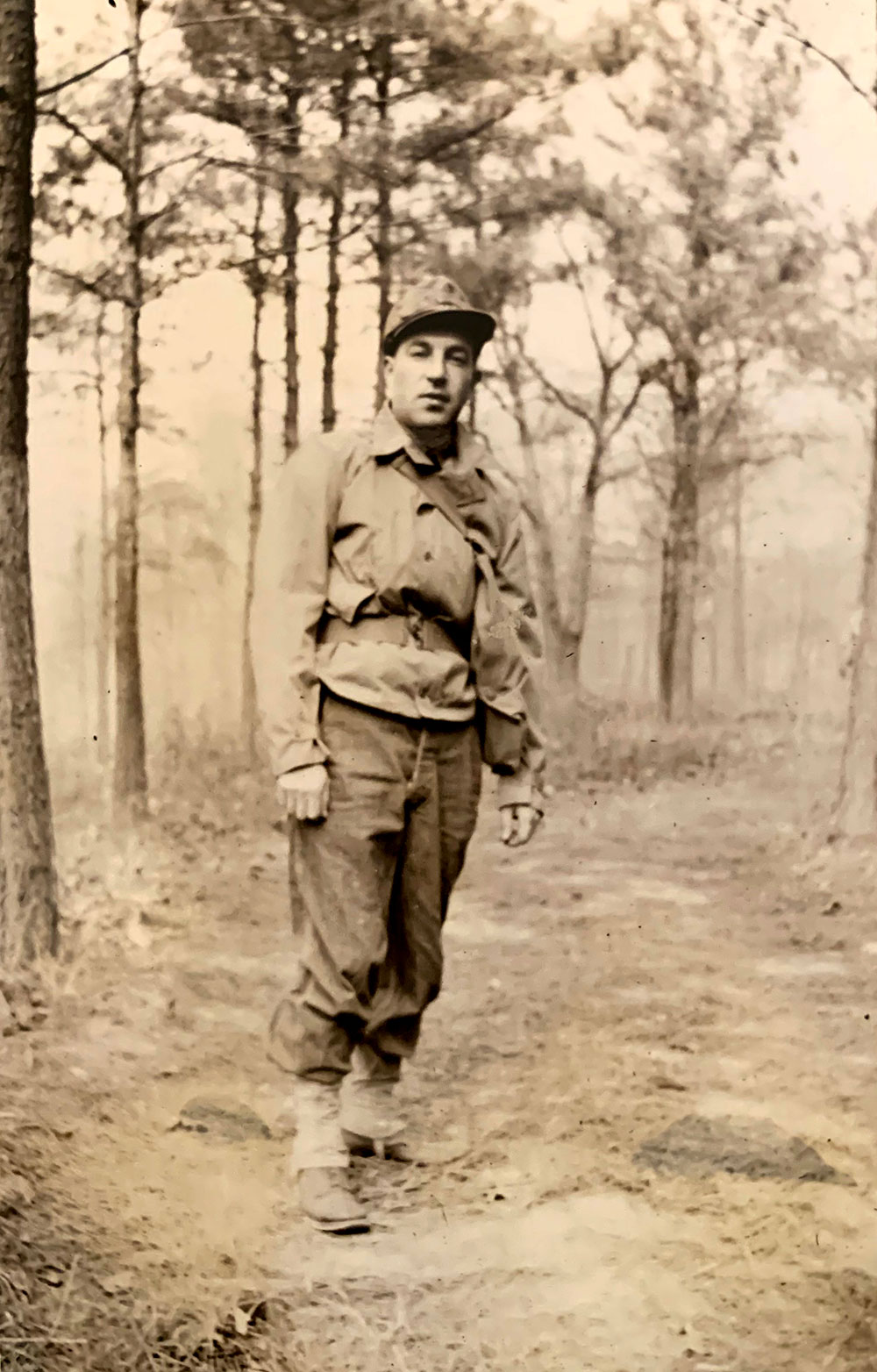 Another pre-airborne photo, possibly taken during Basic Training, though the tall pines look like Camp Mackall
Another pre-airborne photo, possibly taken during Basic Training, though the tall pines look like Camp Mackall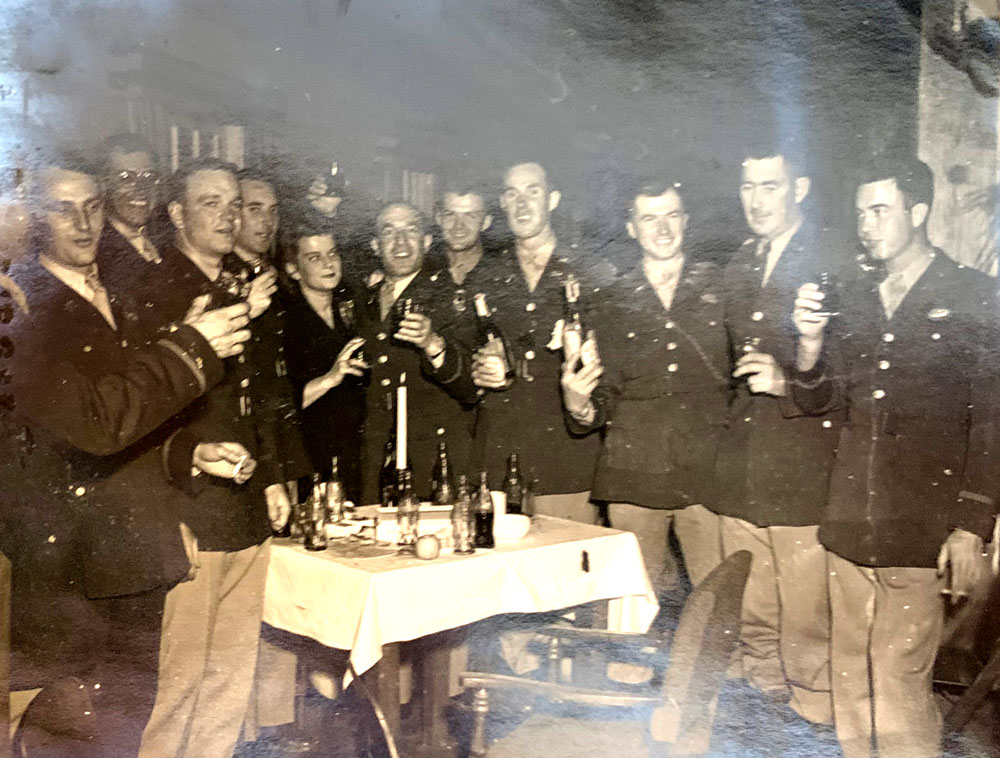 A celebratory or holiday dinner that occurred stateside (Abraham is sixth from the right). All officers are wearing jump wings and 11th Airborne Division patches, but no other commendations
A celebratory or holiday dinner that occurred stateside (Abraham is sixth from the right). All officers are wearing jump wings and 11th Airborne Division patches, but no other commendations Another celebratory or holiday dinner, also taken stateside (Abraham is center).
Another celebratory or holiday dinner, also taken stateside (Abraham is center).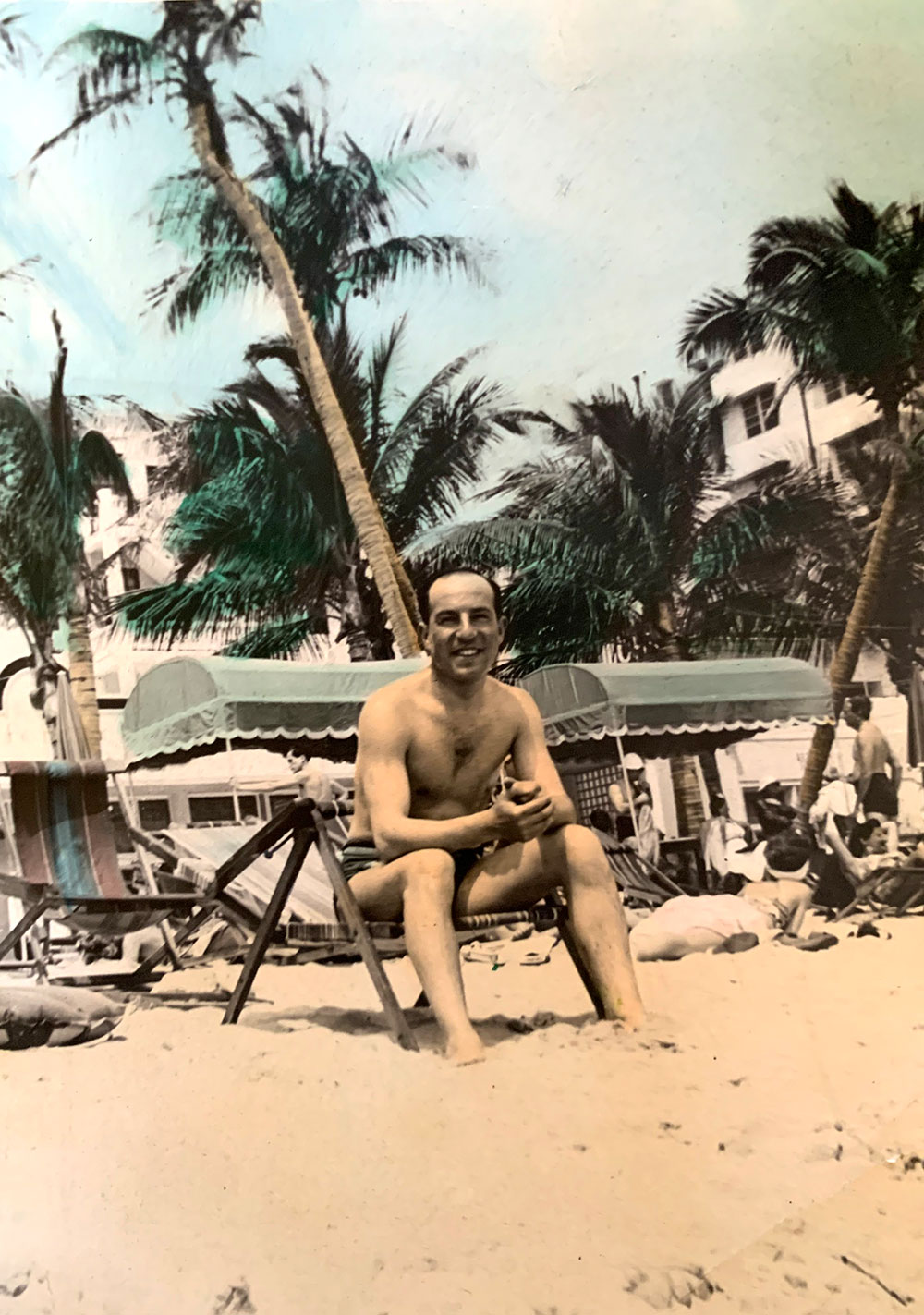 Abraham sits on a tropical beach somewhere, possibly taken on Luzon and sent home
Abraham sits on a tropical beach somewhere, possibly taken on Luzon and sent home Taken after the 11th Airborne deployed to the Pacific, this photo shows Abraham in a JEEP. Possibly taken on Luzon.
Taken after the 11th Airborne deployed to the Pacific, this photo shows Abraham in a JEEP. Possibly taken on Luzon.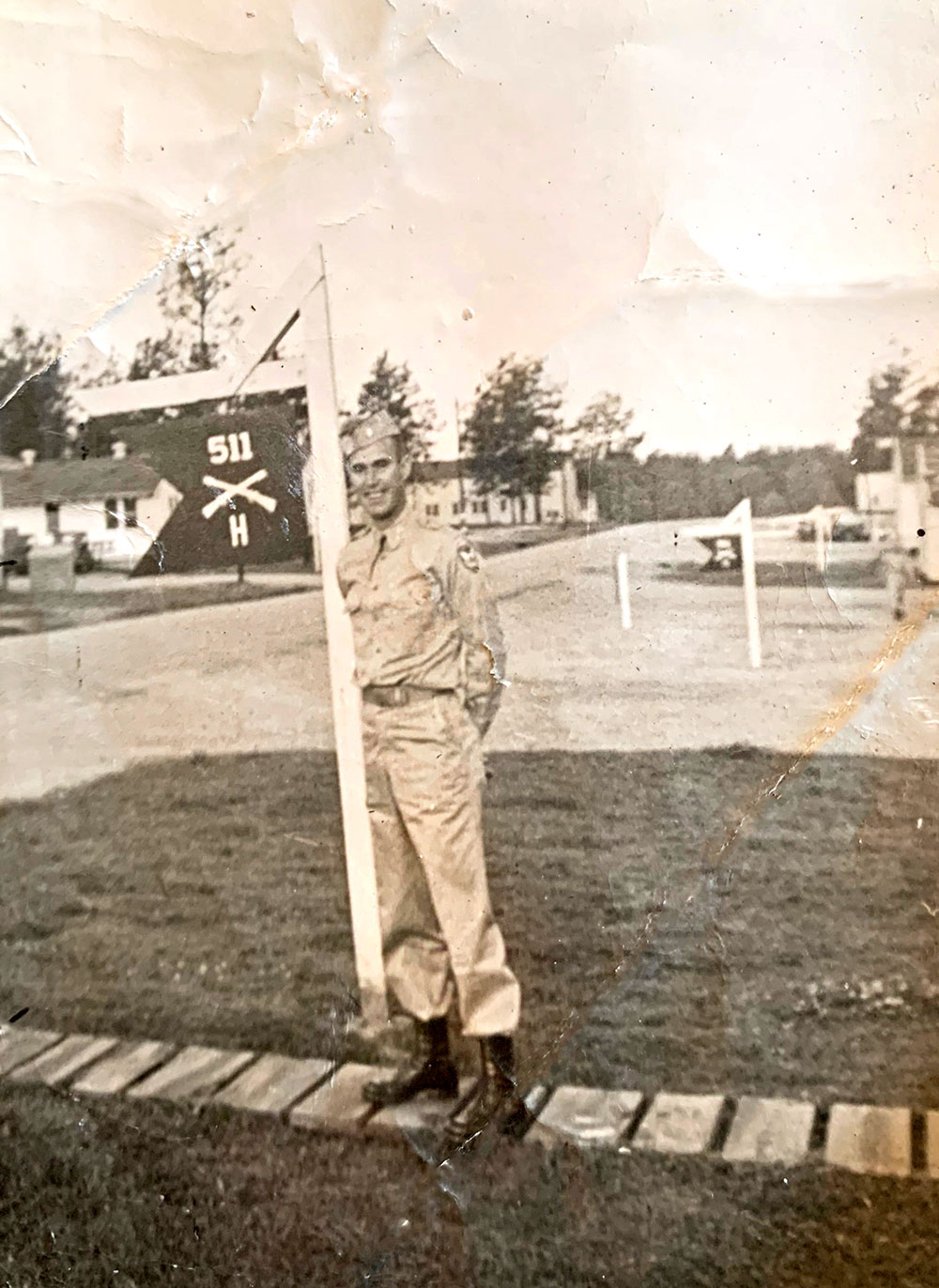 Abraham standing next to H Company's standard while at Camp Mackall in 1943
Abraham standing next to H Company's standard while at Camp Mackall in 1943